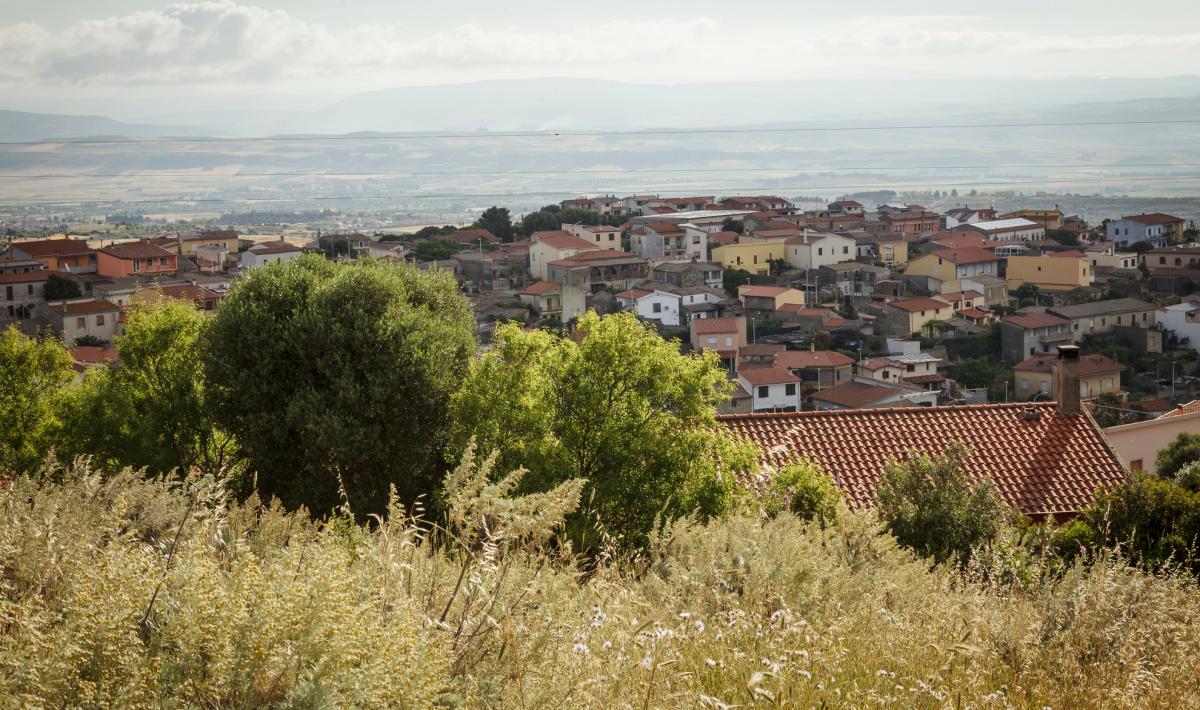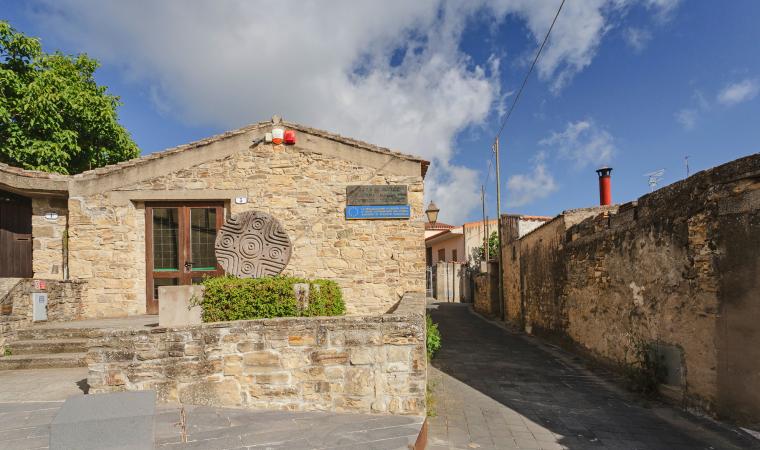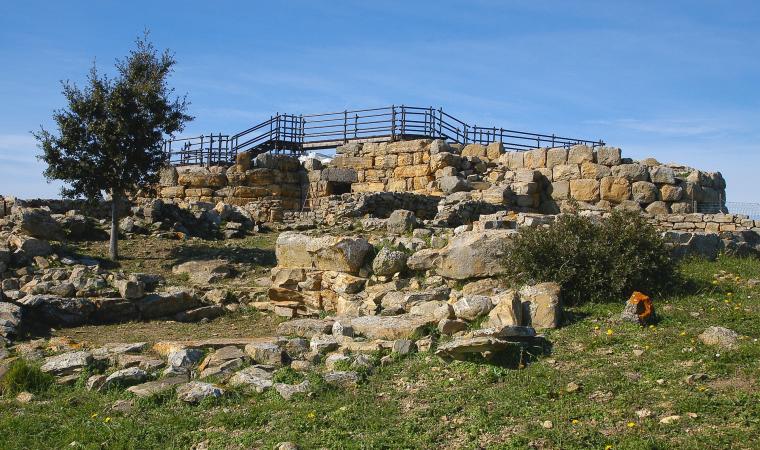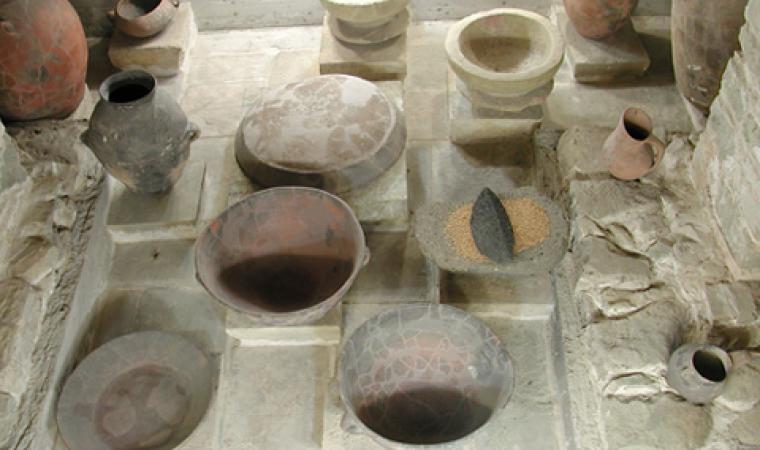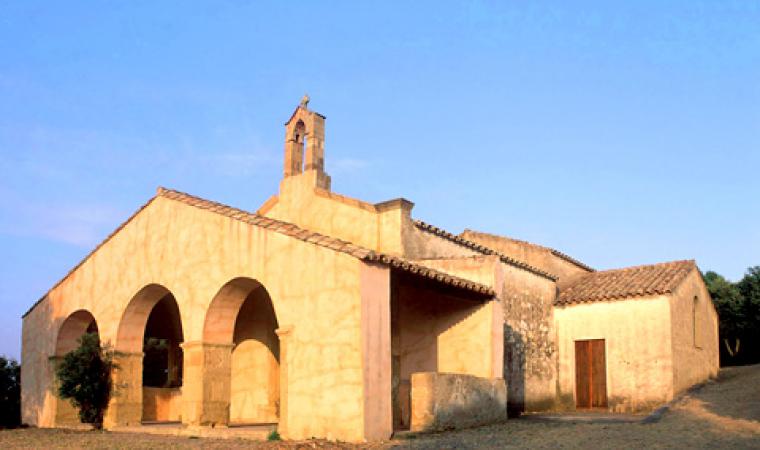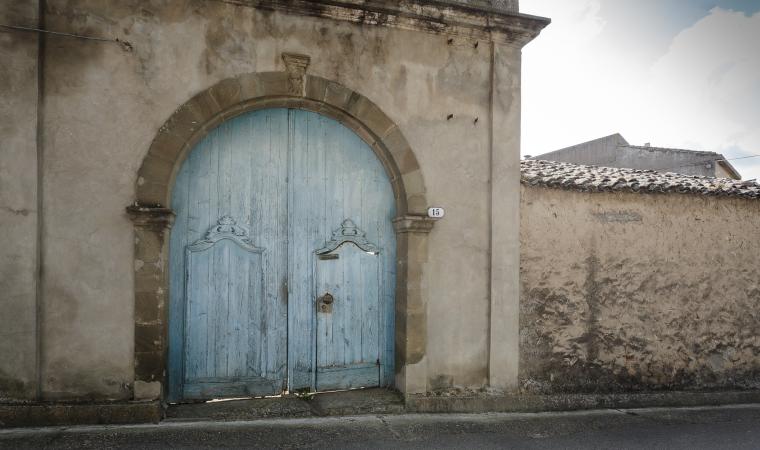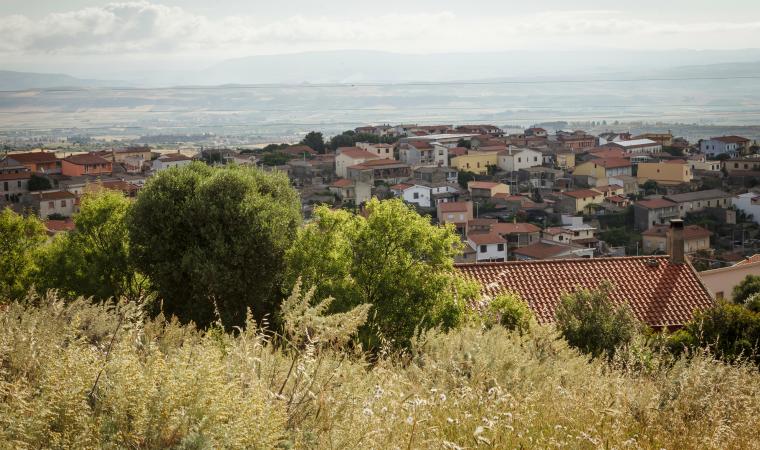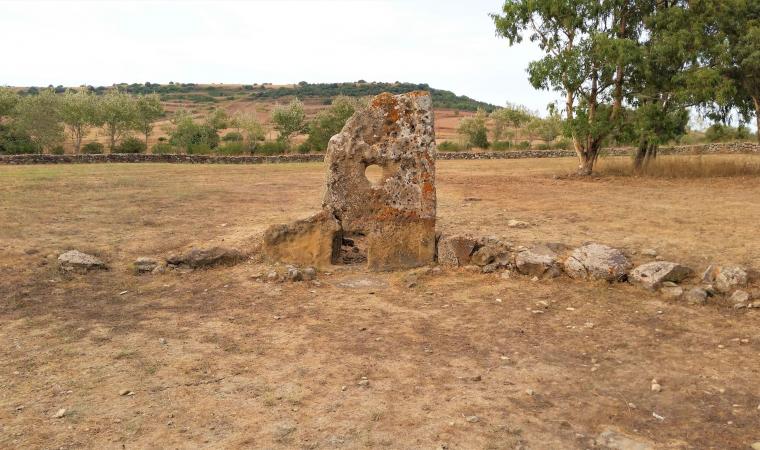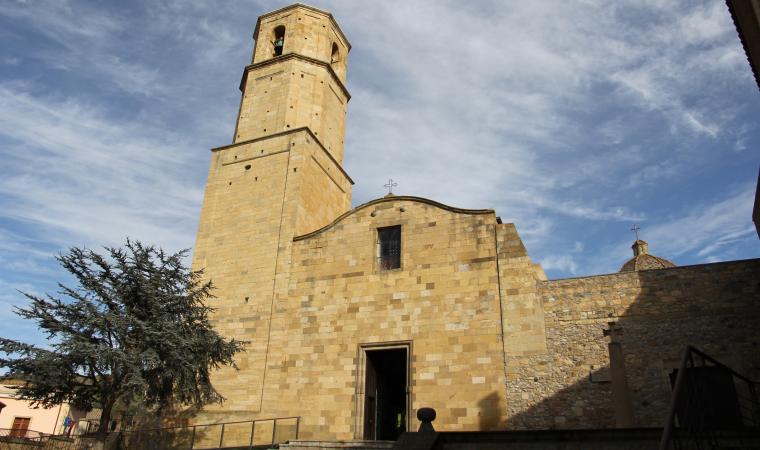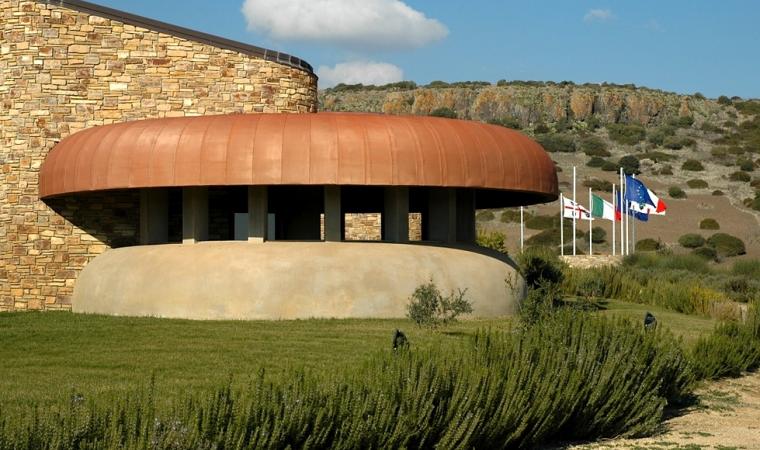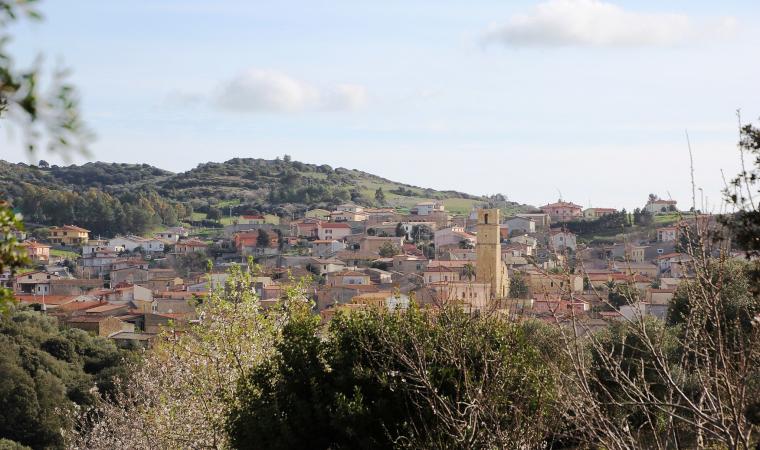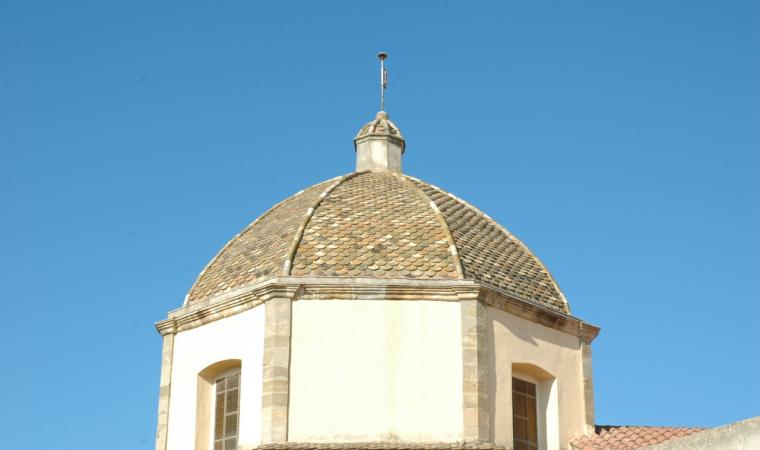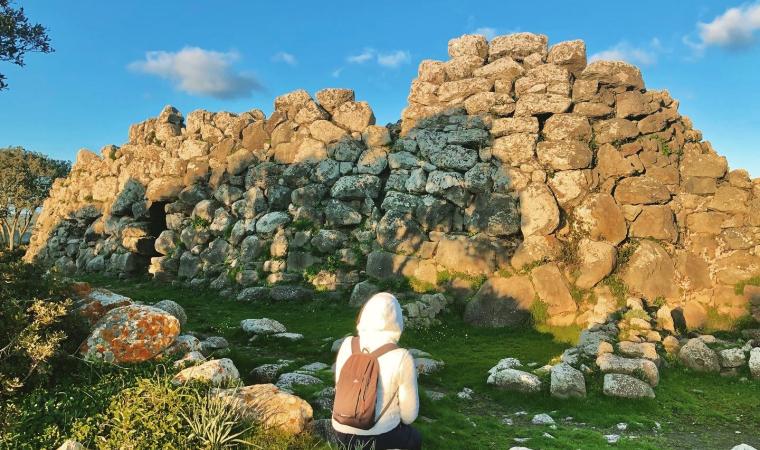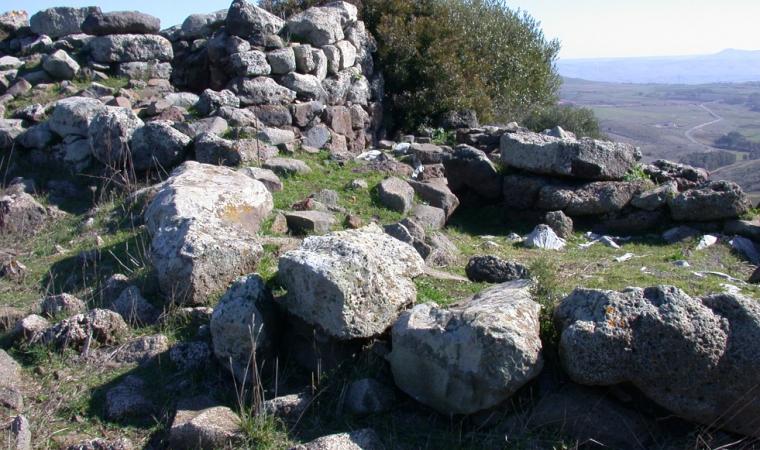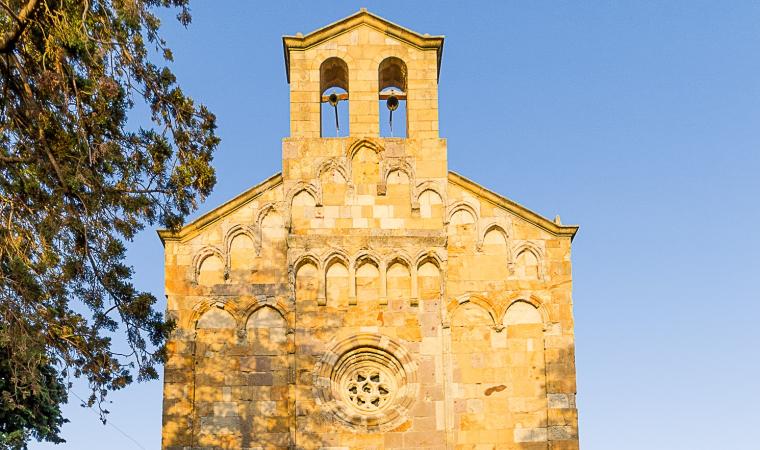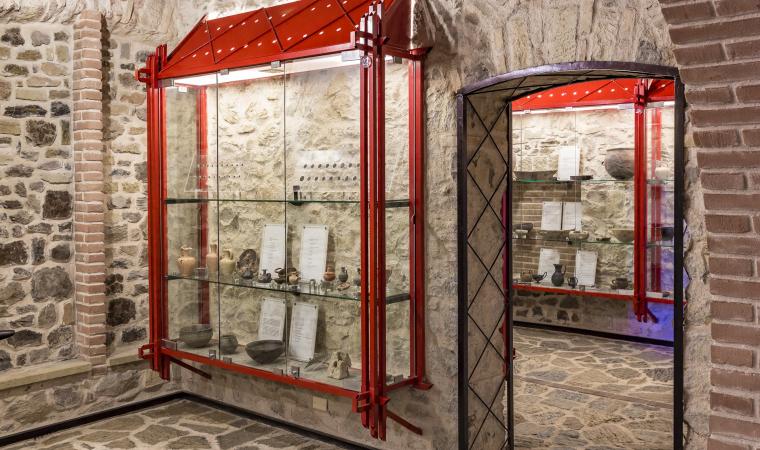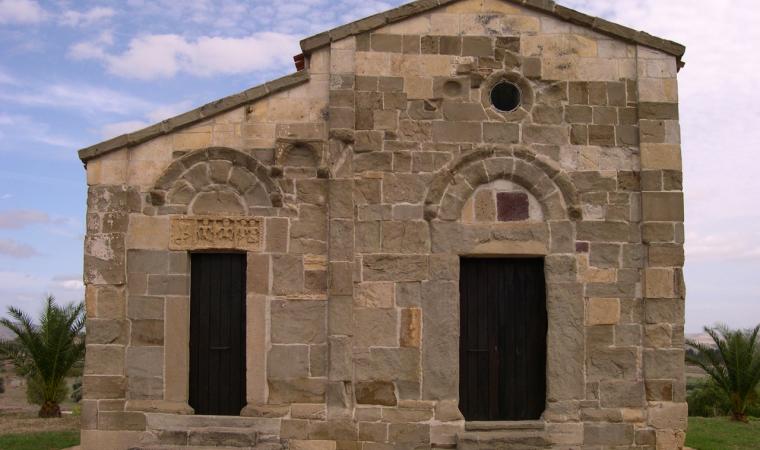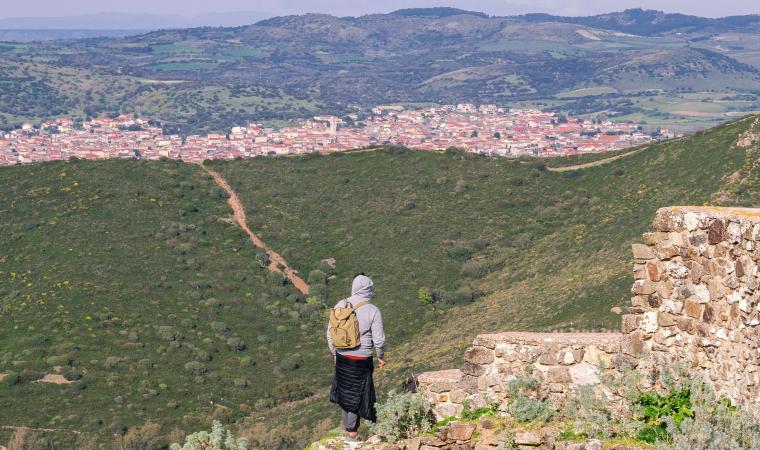It is located in the gentle hills, about 50 kilometres from Cagliari. Villanovaforru is a small village with just over 600 inhabitants and is an important cultural centre that became prominent in the middle of the twentieth century, following the discovery of the Nuraghe Genna Maria and the opening of the archaeological museum linked to it. The Nuragic complex dominates the territory at the top of a hill. It has a central tower (dating back to the 15th century BC), surrounded by a bastion with four large towers joined by thick walls that enclose a courtyard with a well, partially dug out of the rock. In turn, the quadrilobed defence wall is enclosed by a perimeter wall with six towers in the corners. Inside and outside of it, there is the village, built in several phases.
The most highly-evolved huts have complex structures with a central plan and decorated rooms of various shapes. In the Iron Age (9th-8th centuries BC), the complex was used for votive purposes, as confirmed by the objects found. The precious artefacts found during the excavations (from seven centuries of frequentation) are kept in an elegant nineteenth-century building, once Monte Granatico and today a museum. Findings from other Pre-Nuragic, Nuragic, Punic, Roman and Late Antiquity sites are also on show and come from villages, necropolises and monumental village tombs in the Marmilla region, forming the Sa Corona Arrubia consortium. Inside it, you will relive the phases of daily life of the Nuragic peoples and the evolution of the sacred rituals, until the worship of Demetra and Core and the Byzantine rituals.
The structure of the village of Villanovaforru is seventeenth century: the country was founded under Spanish domination. Many of the houses were built according to Medio Campidano agricultural tradition. The inhabitants of Villanovaforru are particularly devoted to Santa Marina di Orense, a Spanish martyr celebrated twice during the year (the Monday and Tuesday after Easter and in mid-July). Homage and praise is paid to her in a procession, with the coggius, liturgical songs, Ave Maria and the rosary sung in Sardinian language. Elderly women grow basil especially for the occasion, which is blessed and placed next to the statue of the saint during the celebration. All the worshippers take a little sprig of it for their homes. Is frabbicas de Santa Marina, a film by director Piero Tatti, focus on this unusual custom. Other celebrations take place on 20 January for St. Sebastian, in mid-May for St. Isidore and at the beginning of October for St. Francis, to whom the parish church is dedicated.

